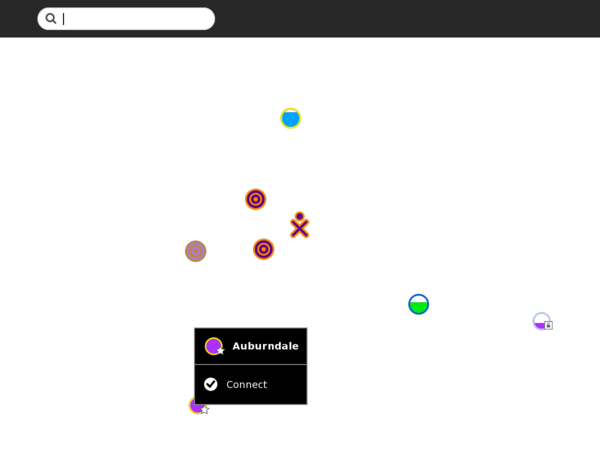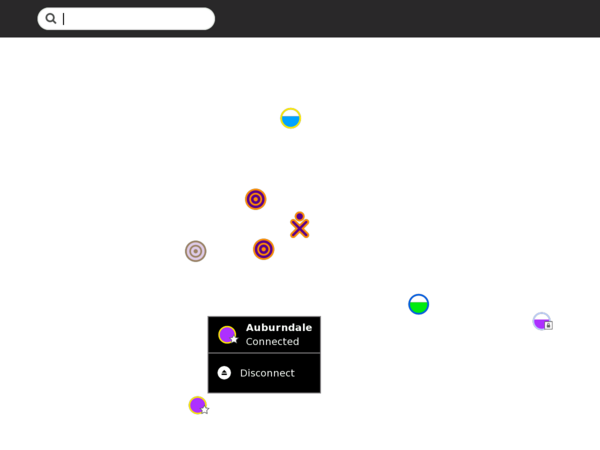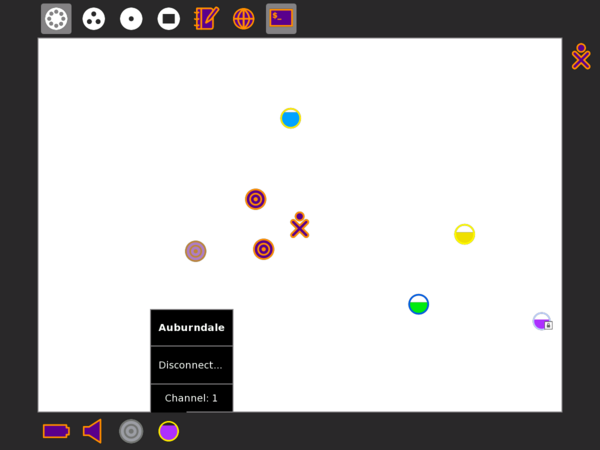User:Walter/sandbox/Connecting: Difference between revisions
m moved Walter is a wanker 2/sandbox/Connecting to User:Walter/sandbox/Connecting over redirect: revert |
|||
| (6 intermediate revisions by 5 users not shown) | |||
| Line 7: | Line 7: | ||
* “School Server” mesh network; | * “School Server” mesh network; | ||
* “simple” mesh network, which lets you collaborate directly with other Sugar users; | * “simple” mesh network, which lets you collaborate directly with other Sugar users; | ||
* wired | * wired network—may require an external adapter ([[OLPC#USB Ethernet adapters|<font color="#6ebe46">OLPC-XO-1-specific hint</font>]]). | ||
You make your connection from the Neighborhood view. Your current connection status is shown on the Frame. | You make your connection from the Neighborhood view. Your current connection status is shown on the Frame. | ||
| Line 79: | Line 79: | ||
| align="right" | || If your computer is “mesh enabled” and you don't specify a network, you will automatically be joined to a simple mesh network, enabling you to collaborate with others in the mesh, but not necessarily to access the Internet. | | align="right" | || If your computer is “mesh enabled” and you don't specify a network, you will automatically be joined to a simple mesh network, enabling you to collaborate with others in the mesh, but not necessarily to access the Internet. | ||
|- | |- | ||
| align="right" | [[Image:Wireless-key-required.png]] || valign="top" | You will be prompted if the access point requires a key. ([[OLPC | | align="right" | [[Image:Wireless-key-required.png]] || valign="top" | You will be prompted if the access point requires a key. ([[OLPC#Connect|<font color="#6ebe46">OLPC-XO-1-specific hint</font>]]) | ||
|} | |} | ||
I copied this content to [http://en.flossmanuals.net/bin/view/Testing/TestChapter FM] ([[User:Dfarning|dfarning]] 02:55, 10 July 2008 (UTC)) | |||
[[Category:General public]] | [[Category:General public]] | ||
[[Category:Getting started]] | [[Category:Getting started]] | ||
Latest revision as of 13:26, 1 March 2010
Getting Connected
There are multiple ways to connect to the Internet:
- wireless access point (WiFi hotspot);
- “School Server” mesh network;
- “simple” mesh network, which lets you collaborate directly with other Sugar users;
- wired network—may require an external adapter (OLPC-XO-1-specific hint).
You make your connection from the Neighborhood view. Your current connection status is shown on the Frame.
Step 1: Go to the Neighborhood view
previous | next
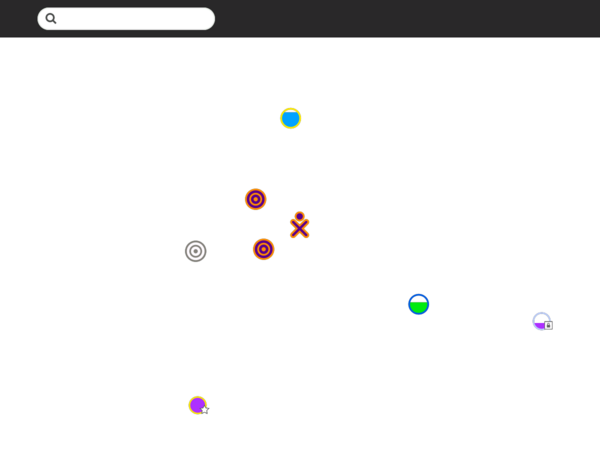 |
| Go to the Neighborhood view to connect to an access point. |
| Hint: The Neighborhood view is accessed by clicking on the Neighborhood icon on the Frame |
Step 2: Choose an access point
Step 3: Activate a connection
To activate a network connection, click once inside the circle that corresponds to your chosen access point (or click on the ✔ Connect option in the hover menu). (OLPC-XO-1-specific hint)
While the connection is being established, the inside of the circle will blink. Once the connection is established, the outside of the circle will turn white. If for some reason the connection failed, the circle will stop blinking. Sometimes it is necessary to try several times before the connection is established.
If the access point requires a key, you will be prompted. Note that different types of access points require different types of keys: be sure to select the correct type from the pull-down menu that is presented. Some access points (such as the Apple Extreme®) will only work with a hexadecimal value. If you have a password or passphrase, go to Hex Converter to get the hex key. Also, with the Apple Extreme you need to set “shared key”. Most other access points prefer the “open key” setting when using WEP.
Step 4: Checking the connection
Additional hints
| You make your connection from the Neighborhood view. | |
 |
Your current connection status is shown on the Frame. |
| Access points are represented by circles. The fill level indicates signal strength. | |
| Access points that require keys have a “locked” badge. The color of the circle is calculated from the ESSID of the access point. The name of the access point is displayed when you hover over it. | |
| You connect by “clicking” in the center of the circle. The center of the circle will blink while the laptop is trying to connect. | |
| Once you are connected, the rim of the circle turns white. If the attempt to connect fails, the circle will stop blinking, but the rim will not turn white. Try again—it sometimes takes 2–3 tries to connect. | |
| To disconnect, select “Disconnect” from the hover menu that appears in either of the network status menus (See Step 4 above). | |
| Mesh portals are represented by a series of concentric circles. The color of a mesh portal is the same as your XO color. | |
| If your computer is “mesh enabled” and you don't specify a network, you will automatically be joined to a simple mesh network, enabling you to collaborate with others in the mesh, but not necessarily to access the Internet. | |
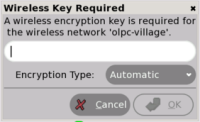 |
You will be prompted if the access point requires a key. (OLPC-XO-1-specific hint) |
I copied this content to FM (dfarning 02:55, 10 July 2008 (UTC))
